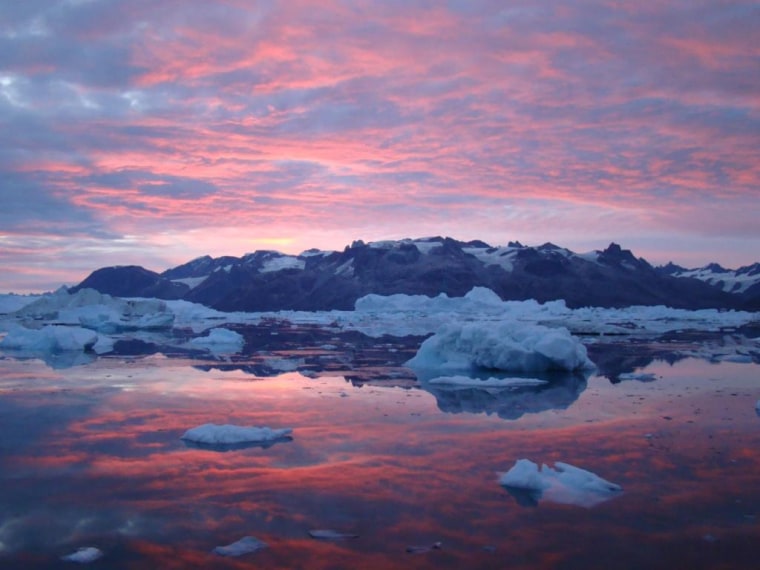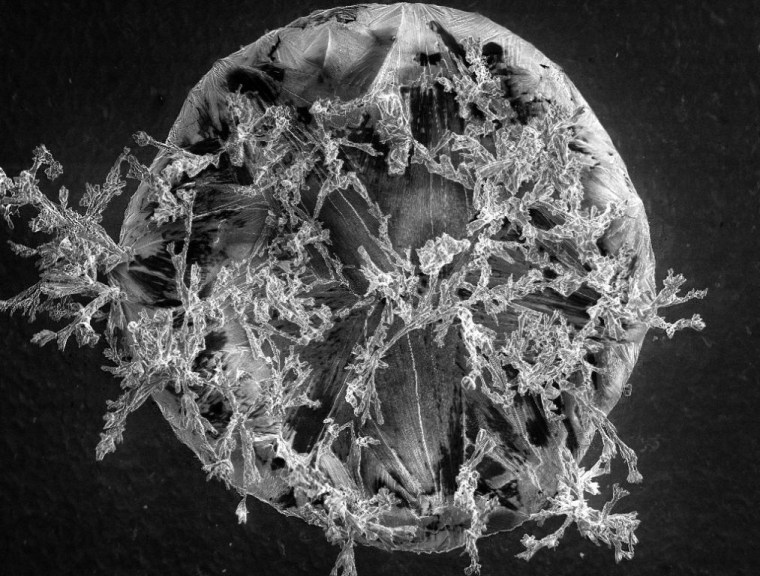A close-up look at a grain of salt, a blue glacier against a pink sky and a map of sea-turtle tracks are among the winners of the 2012 Research as Art competition.
The competition, organized by Swansea University in Wales, is open to all Swansea researchers in any field who have a cool image to share. This year's entries included more than 100 images, from which judges picked 15 winners.
The overall winner was submitted by Hollie Rosier of Swansea University, who came across a grain of sodium sulfate and sodium chloride (salt) while researching jet turbine safety. Jet turbines become very hot when in use and are also exposed to the atmosphere. This combination can lead to compounds such as salt encrusting the turbines. Rosier and her colleagues reproduced and photographed one such salt grain in the laboratory. [ See all the Winning Images ]

"This tiny grain of salt, with a diameter of only 2 millimeters, has recrystallized from an aqueous solution in different phases to create its unique and unusual appearance," Rosier said in a statement. "The importance of this research leads to the safer design and operation of aircraft engines."
Though Rosier's winning image is in stark black-and-white, other scientific photographers played with color. Tavi Murray, a glaciologist at Swansea University, was recognized for his jaw-dropping photograph of Arctic icebergs against a pink sky. Rami Malki of the university's Marine Renewable Research Group made it to the top 15 for his dreamy blue image of the flow of water around a tidal-stream turbine. And biologist Rebecca Scott won for her map of ocean currents upon which baby sea turtles drift.
"Research is more than the hard facts that make it into the papers and journals — the Research as Art competition reveals the day-to-day human experience that lies beneath the results," contest judge Flora Graham, the deputy editor of NewScientist.com, said in a statement.
The art of science is becoming increasingly popular, with multiple competitions for scientists to display their creative side. Every year, for example, Princeton University holds an Art of Science exhibition, featuring everything from models of Earth's magnetic field to images of nanocrystals. And the winners of camera-maker Nikon's annual Small World competition can enjoy widespread admiration of their macro photographs of the very tiny.
The Swansea image competition is "an opportunity for researchers to engage, inform and inspire people," contest organizer Richard Johnson, a lecturer in engineering, said in a statement. "Researchers have a responsibility to make their research accessible … and the thirst from the public is certainly there!"
Follow Stephanie Pappas on Twitter @sipappas or LiveScience . We're also on Facebook and .
